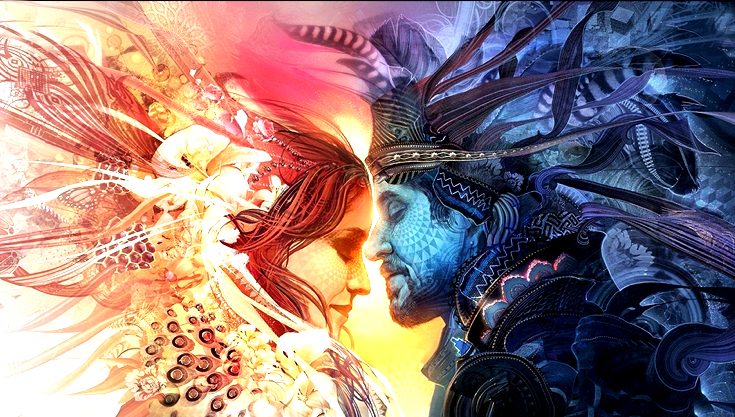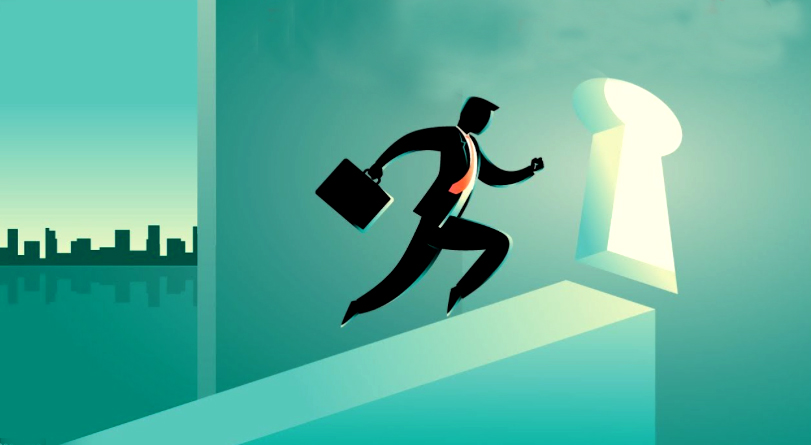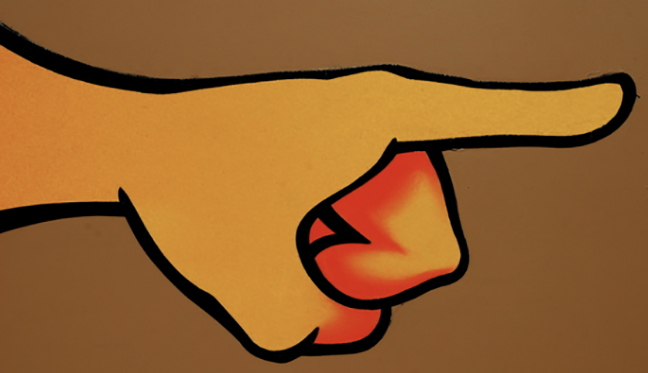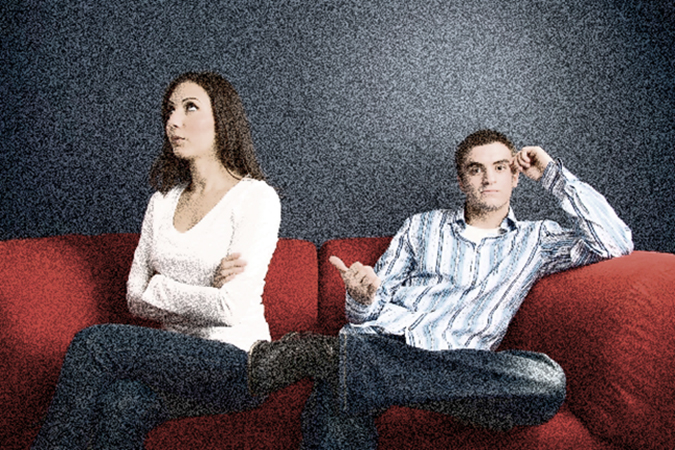
I just had the opportunity to see another stage production of Les Miserablés, I have seen it several times in the theatre, and of course have seen the movie, but this particular performance seemed to clarify for me the archetypal elements of the work. Maybe this came to me in a more obvious way having just seen the movie several months prior. Films are typically shot to convey a material reality, i.e., a believability in its objective presentation rather than relying on symbolic elements to convey its meaning. This is difficult enough to do in a relatively restrictive media form as cinema, but is even more difficult to do with a musical, which clearly, just by its nature, is not presented as an objective reality—most people don’t go around singing in daily life.
Although I enjoyed the movie version very much, I realized while watching the stage performance why I love the theatre so much. Stage in general, and musicals in particular, force the audience to suspend disbelief and accept what is coming at them symbolically and metaphorically. Once characters break into song or dance, we know we are watching and hearing something that is meant to be perceived at a bit of a deeper level. Stage settings (moving the narrative from one location to another, with minimal, often symbolic, renditions of locations) and theatrical lighting (which can emulate emotion as well as light up the actors and sets) help to add to this perceived altered state of reality. The narrative also is very often condensed and contrived to make the major points of the story clear. Characters are often stripped of much of their detail and nuance, leaving a more authentic representation of the fundamental archetypes they may be offering.
Before going much further, I feel I should at least make an attempt to define the word “archetype.” Carl Jung, the eminent Swiss psychologist who described the term, from a psychological perspective, as being a pattern or propensity within the collective human unconscious. By collective he meant that we are all born with these patterns within us, and having the patterns within us allows us to behave a certain way, or resonate and understand a certain behavior we may see in the external world around us, or, as Jung notes repeatedly in his writing and research, within the internal dream world inside of us. Jung found that throughout the world people seemed to have an understanding of certain symbols and ideas universally—without having actually learned them through physical experience. Although these archetypes may be clothed differently in different cultures and in different historical periods, they all essentially point to the same ideas.
Take the mother archetype for example, we all seem to universally know what mother is, women who become real mothers are obviously more in touch with this archetype , but all of us, even males, know mother to be a certain thing. This may seem obvious, since we have all had an actual mother, but other archetypes do not need to be experienced for us to resonate with them and understand the meaning behind them. As you read this article you should be able to recognize the archetypes that are discussed, and find a connection with all of them. The connection with these universal patterns of being causes us to understand and empathize with characters that represent them. It is one reason why a story like Les Miserablés is so universally appealing.
I have not yet read the book, so from a certain point of view my perception of archetypal components in the characters is heightened, as I have no fully developed literary character to fill in the gaps that may be present in the formulation of more fundamental elements found in the musical. To say these characters are depicted in a fundamental manner is not meant to take away their subtlety. They are, in fact, complete, but not complete in a unique descriptive way, but rather complete in a more universal, collective way. All characters, in all stories (the good ones at least) express the components of many archetypes. If the character is too detailed and descriptively complete, the individual archetypes are more difficult to discern. In the musical Les Miserablés the characters presented are more pure in form, more consistent within one or at most two or three, basic intentions.
One important thing that makes a story compelling and interesting is our internal and often unconscious resonance with the characters. This goes beyond a feeling of identification or kinship with someone on stage you may particularly like, or are empathic toward as it includes characters we may find disturbing, evil, or very distasteful. As noted before, Jung suggested that we are in touch with many, if not all, of what are considered the collective archetypes of humankind. These include, among others, mother, father, hero, warrior, king, orphan, lover, and trickster. Often, in mythology, these archetypes are presented as gods, such as Aphrodite, Hermes, Apollo, Zeus, and Hera, each god or goddess having their specific strengths and weaknesses, attributes and faults. All put together they make up a pretty well rounded mortal and, according to Jung, the qualities of each of these gods resides within each of us as individuals. In fairytales we see these archetypes show up within the characters involved in the story such as the dark feminine in many of the tales that involve witches, or the hero in tales of knights slaying dragons, or boys that climb giant beanstalks.
Why is any of this important? I will get to that at the end of this article, right now I would like to go through a few of the major characters in Les Miserablés and explore their archetypal elements. First, of course, we will look at Jean Valjean. He is the protagonist of the story, and in him we see the perfect man. Although not in itself an archetype, the perfect man is made up of several important forces. One is honesty and integrity. Jean Valjean achieves this through a series of trials, or what we would call “symbolic near mortal wounds,” the first being his transgression with the law in the theft of a loaf of bread to feed the starving children of his sister. For this he lands in jail and as such becomes the wounded martyr, a Christ figure (also an archetype) of the misunderstood man of virtue who must break the law in order to do a greater good, and as a result is punished for life.
We see this throughout mythology. Parsifal comes to mind, where the leader of the knights of the grail, Amfortas, carries a terrible wound that was inflicted upon him at a time of spiritual weakness. He carries this wound for the rest of his life, just as Valjean carries the tattoo on his chest given to him by his jailers at the time of his initial incarceration. Although the details behind the Parsifal story are not entirely in alignment with Les Miserablés, the underlying archetypal element of the two can be seen to be the same: a wound, or mark, that carries the sign of an early mistake of some sort that is carried for life, or some considerable time, until released by some sort of enlightenment (which in Valjean’s case may have been his death and ascent to heaven, or possibly the innocent union of Cosette and Marius.)
The formation of Jean Valjean is also based on a central Jungian concept termed the tension of the opposites, which posits that very little of value in life consists of clear boundaries between extremes. As a person strives toward individuation (another Jungian term which describes personal wholeness) they begin to grapple more frequently with this concept of good and evil never really being clearly defined. Jung said a result of individuation was a person’s ability and stability in holding the tension of the opposites and not requiring that this tension be resolved. Jean Valjean does seem to reach this point in his life and this is probably most clearly represented when he has the opportunity to kill his nemesis Javert but chooses not to. Here he has the chance to destroy the spear in his side and seemingly dissolve the wound (he knows, however, this idea to be a delusion), but decides instead to allow for the tension of the opposites. As we will see further along, Valjean and Javert need the presence of the other in order to express their own particular perspective of life.
Although I am presenting the Jean Valjean character as representing an individual archetype it would be more accurate to see all of the characters as composites with a primary function and maybe several inferior, or less than primary functions. Valjean does represent perfect goodness in a man (Christ) but also represents the rather co-dependent wounded healer (again a Christ-like attribute), and the self-less father figure. Any real human being made up of this sort of purity would be suspect and not seen as real. In the play, this position is countered by Javert, who represents contract, law, and single-minded compliance to what has been deemed right and correct by authority (here Javert confuses God with the law of man). These attributes, and sticking to them, are indeed the cause of his fall, as the rigid and non-flexible will eventually crumble from its own weight. The two characters are two sides of the same coin, and mixed together present the grey area Jung speaks of when referring to the tension of the opposites. As observers we can see the validity of both perspectives and although we may ultimately side with Jean Valjean (does indeed everyone side with him?) we do admire Javert in a certain way, as he is a man of rigid principles and values, which carries with it a comfortable illusion of control.
The last of the primary characters I would like to comment on are the innkeepers, Monsieur and Madame Thénardier. These are very interesting characters. In the play they provide the comic relief, but also are integral to several points of the story. First and foremost they are the caretakers of little Cosette, the orphan who becomes the focus of Valjean’s life. Madame Thénardier, in this regard, plays the dark feminine, more specifically the dark mother, as have many witches and evil stepmothers throughout fairy tale history. Secondly, they reveal the secret of Valjean’s whereabouts at the end of the play and also solve the riddle of the secret savior who rescued Marius when he was dying at the blockade.
From an archetypal perspective, Thénardier serves as the trickster. The trickster archetype has a colorful and quite important history. He or she has shown up as court jesters, jokesters, sly foxes in myths and fairytales, coyotes in Native American lore, the devil, the clever gnome, and most recently as Gollum in Tolkien’s Lord of the Rings. Although often depicted as evil and unsavory, trickster need not be either. He or she can be seen as clever, wily, and even quite wise, typically always out for himself, he preys on the gullibility of others and typically creates opportunity for himself and hardship for his targets by playing on one’s greed, selfishness, and general lack of morals or values. Tricksters are important because they call us out when we are overly righteous. They often are the fly in the ointment, and force us to take life less seriously, and certainly make us realize that the best laid plans often crumble—trickster will show up and make a muck of anything that we think is a sure thing, perfect, or pure. It is appropriate that Thénardier is an innkeeper, taking advantage of his clientele’s need for drink and debauchery. It is interesting to note that he typically fails when plying his skills on those of pious stature such as Valjean or even Javert. He attempts to bribe Marius, and fails here as well.
We relate to trickster as we find him clever and self-preserving. He is a character who will do anything for survival. We admire him with a touch of disgust just as we admire the cockroach, which we believe can survive anything. Trickster will certainly survive. Trickster is also abandoned fun and within him, or at least within this depiction of his archetype, we see Dionysus, the god of wine, ritual folly and ecstasy.
There are many other archetypes represented in this amazing play. Fantine as the lost mother, a darker element of the nurturing, satisfied, mother, representing an all but dysfunctional mother who will stop at nothing to protect and care for her child. This is reminiscent of Demeter in Greek mythology, who will stop at nothing to rescue her daughter Persephone from the depths of hell. Cosette is the lost orphan or divine child with the idealistic dream of being a child in a harsh loveless world. She represents the spark of love present as undying hope in all children, even those who have been abused harshly. Marius and his cohorts represent idealistic youth—Eponine unrequited love and the power of projection to hold onto a love that essentially is a fantasy. Even though these descriptions are not necessarily archetypes, they have within them archetypal elements that we all can clearly identify with.
There has been quite a bit written about the archetypes present in the novel Les Miserablés as well as those found in the musical. Clearly it was intentional to present these characters and the symbols that surround them as having deep and significant meaning beyond the basic story. Again, I feel the stage production as a musical allows for these deeper elements to reach our hearts in a more direct and unobstructed way. As we relate to not only the characters, but also the universal archetypes they represent, we come to a better understanding of what makes us all human. We experience a sympathetic vibration with these archetypes as each one of them, represented in these clear forms, touches their corresponding spots in our own psyche. Thus we feel more connected, not only with the good parts of ourselves, but also, and possibly more importantly, with the darker parts. All, light and shadow, is intimately touched, therefore we not only can find love and compassion and empathy for the characters of Valjean, Fantine, Cosette and Marius, we can find sympathy or at least understanding in the likes of Javert and even Thénardier, because we see a piece of them in our own psyches as well. Here we come closer to accepting the tension of the opposites within ourselves, as well as within the world around us.
*****
Todd Hayen is a psychotherapist practicing in Richmond Hill Ontario. Please leave comments by clicking the comments link below this post. I welcome any thoughts you may have.







Leave A Comment